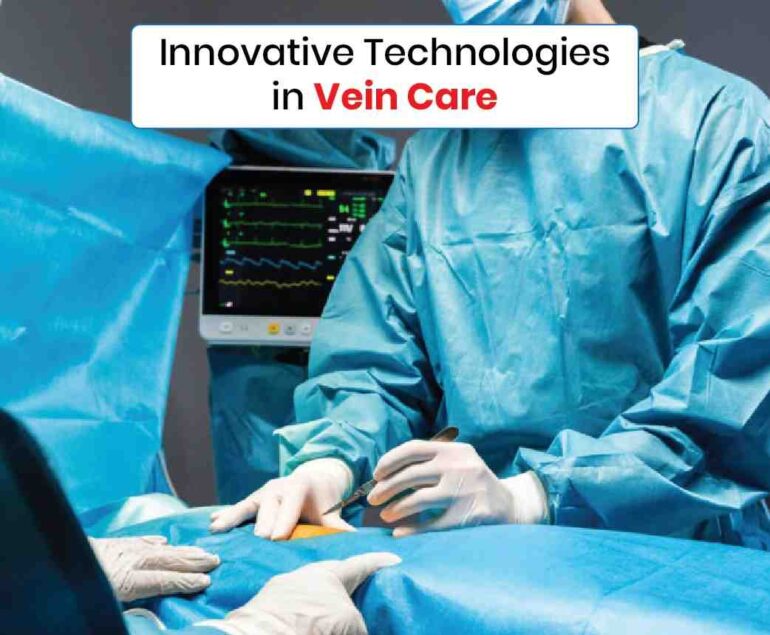Diabetes is a chronic condition that affects millions of people worldwide. While it is well-known for its impact on blood sugar levels, diabetes also has a significant relationship with vein diseases. In this blog, we’ll explore the connection between diabetes and vein diseases, their consequences, and modern treatment options like sclerotherapy and Cryo Laser and Cryo Sclerotherapy (CLaCS) that offer substantial benefits.
The Connection Between Diabetes and Vein Diseases
Diabetes, particularly when poorly managed, can lead to various complications, including those affecting the veins. The relationship between diabetes and vein diseases is primarily due to the following factors:
- Poor Circulation: Diabetes can cause damage to the blood vessels, leading to poor circulation. This can result in blood pooling in the veins, especially in the legs, increasing the risk of developing vein diseases such as varicose veins and chronic venous insufficiency (CVI).
- High Blood Sugar Levels: Consistently high blood sugar levels can damage the walls of the veins, making them less elastic and more prone to developing problems. This damage can lead to the formation of blood clots and further complicate existing vein conditions.
- Peripheral Neuropathy: Diabetic neuropathy can result in loss of sensation in the legs, making it difficult for individuals to notice the early symptoms of vein diseases. This lack of awareness can delay treatment and lead to more severe complications.
Consequences of Vein Diseases in Diabetic Patients
The consequences of vein diseases can be more severe in diabetic patients due to their compromised vascular health. Some of the significant consequences include:
- Swelling and Pain: Poor circulation can cause fluid to build up in the legs, leading to swelling and pain.
- Skin Changes: Diabetic patients with vein diseases may experience skin changes, such as discoloration, dryness, and ulceration. These skin changes can increase the risk of infections and slow the healing process.
- Venous Ulcers: Chronic venous insufficiency can lead to the development of venous ulcers, which are open sores that take a long time to heal. In diabetic patients, these ulcers are at a higher risk of becoming infected and can lead to more severe complications if not properly managed.
- Increased Risk of Deep Vein Thrombosis (DVT): Diabetic patients are at a higher risk of developing blood clots in the deep veins, which can lead to serious conditions like pulmonary embolism if the clot travels to the lungs.
Modern Treatment Options
Advancements in medical technology have led to effective treatments for managing vein diseases, especially in diabetic patients. Two of the most popular and effective treatments are sclerotherapy and Cryo Laser and Cryo Sclerotherapy (CLaCS).
Sclerotherapy
Sclerotherapy is a minimally invasive procedure used to treat varicose and spider veins. During the procedure, a solution (sclerosant) is injected directly into the affected veins. This solution irritates the lining of the blood vessel, causing it to collapse and stick together. Over time, the vessel turns into scar tissue and fades away.
Benefits of Sclerotherapy:
- Minimally Invasive: No need for surgery or anesthesia.
- Effective: Particularly for smaller varicose and spider veins.
- Quick Recovery: Patients can typically return to normal activities shortly after the procedure.
Cosmetic Improvement: Reduces the appearance of unsightly veins, improving skin appearance.
Cryo Laser and Cryo Sclerotherapy (CLaCS)
CLaCS combines the benefits of laser therapy and sclerotherapy to treat larger varicose veins. This innovative procedure uses a transdermal laser to target and heat the vein, followed by sclerotherapy to collapse the vein. Additionally, a cooling system is used to minimize discomfort during the procedure.
Benefits of CLaCS:
- Enhanced Efficacy: Combines two effective treatments for better results.
- Comfort: The cooling system reduces pain and discomfort during the procedure.
- Minimal Downtime: Patients can quickly resume their daily activities.
- Versatility: Effective for both cosmetic and medical vein issues.
Diabetes significantly increases the risk and severity of vein diseases, leading to serious complications if not properly managed. Recognizing the symptoms and seeking timely treatment is crucial for diabetic patients to maintain vascular health. Modern treatment options like sclerotherapy and CLaCS offer effective, minimally invasive solutions to manage and treat vein diseases in diabetic patients. By addressing the root causes and improving blood flow, these treatments can significantly enhance the quality of life for those affected by both diabetes and vein diseases.
If you or someone you know is experiencing symptoms of vein diseases, especially in the context of diabetes, consult a healthcare professional to explore the best treatment options. With advancements in medical technology, managing vein diseases in diabetic patients has never been more achievable.




